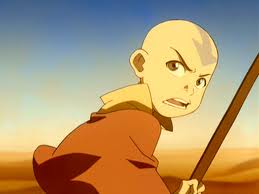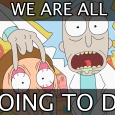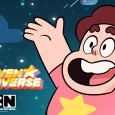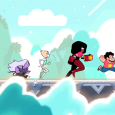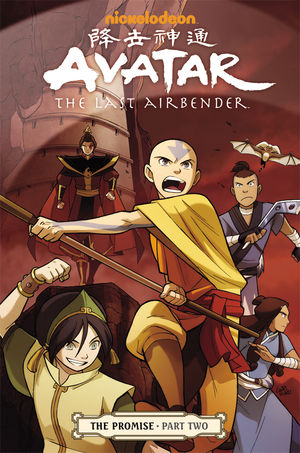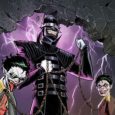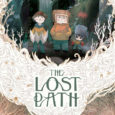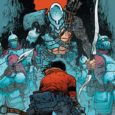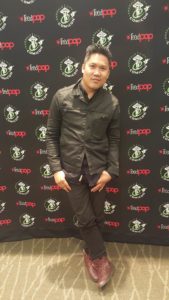 Fortune favors the bold, and boldness is certainly a key trait of Dante Basco‘s! One time leader of the Lost Boys and crown prince of the Fire Nation, Dante has a career spanning over two and a half decades. He is a Hollywood actor who has become a cult classic and pioneering figure in Asian American cinema. He was first introduced in Steven Spielberg’s fairytale movie Hook, as “Rufio,” aforementioned leader of the Lost Boys, quickly jumped to leading roles like New Line’s Take the Lead, opposite Antonio Banderas, and The Debut, which became the voice of a Filipino American generation. From breakdancing in the streets of San Francisco to starring in movies on the silver screen, Dante Basco has become one of the most recognizable faces in entertainment. I was lucky enough to score five minutes of his time before he was zoomed off to another interview at Emerald City Comic Con.
Fortune favors the bold, and boldness is certainly a key trait of Dante Basco‘s! One time leader of the Lost Boys and crown prince of the Fire Nation, Dante has a career spanning over two and a half decades. He is a Hollywood actor who has become a cult classic and pioneering figure in Asian American cinema. He was first introduced in Steven Spielberg’s fairytale movie Hook, as “Rufio,” aforementioned leader of the Lost Boys, quickly jumped to leading roles like New Line’s Take the Lead, opposite Antonio Banderas, and The Debut, which became the voice of a Filipino American generation. From breakdancing in the streets of San Francisco to starring in movies on the silver screen, Dante Basco has become one of the most recognizable faces in entertainment. I was lucky enough to score five minutes of his time before he was zoomed off to another interview at Emerald City Comic Con.
L: Hi! I’m Leia and since we have so little time, let’s get started!
DB: Hi, Leia! – Zuko voice- “I’m Dante and I’m talking with Leia!”
L: Haha, oh my God, you did the voice! Um, I was reading a recent interview of yours where you were talking about Asians having a place in film (Dante is Filipino American) and I’m noticing that Hollywood seems to be slowly getting the picture that people of color need to have a place in movies too –
DB: Definitely!!
L: – and I wanted to know if you have any projects you wanted to do.
DB: Well, there’s lots.I have a company called Kinetic Films that I’m partner of and we do Asian American/Pacific Islander films out of Hawaii, and we’ve done three so far that I’ve co-written some of, produced with my partner James Sereno, and with KevJumba we did Man Up. Me and Kev did Hang Loose together, we did Paradise Broke when it came out. Those are actually all out online. We’re actually funding a film right now for AJ Rafael called Red Roses! We are part of this movement…I created an Asian American arts collective in downtown LA where it’s all about curating, educating, and inspiring the next generation of content creators and it meets on the 8th of every month.You go to WeOwnThe8th.com and it’s about co-opting the 8th of the month for Asian media in America. I’m that generation now where I’m a “young veteran.”
L: What a bizarre sort of title!
DB: – laughs – The world has changed so it’s about getting into the conversation and really understanding that …Hollywood is recognizing that we need to be a part of the system but also we have to recognize that it’s also on us to create the content. It’s not like “oh, Hollywood needs to put us in their movies.” As much as that goes on, it’s still limited to their point of view of who we are as opposed to us as a community, whether it be Asian American, African American, Latino, going, “no, WE have to make content, WE have to be filmmakers.” It’s on us to represent us. It’s not on us to go and say you have to do this for us. That’s not how it works. How it works is we have to write and make the stories and it might start small. It might be a $10,000 project, maybe a $100,000 project. We’re not coming off the blocks making million dollar films and it’s okay! We have to create the stars and stories from our own experiences and not have the system dictate to us. You know what I’m saying?
L: Absolutely. It’s so important to find our point of views in media, especially for kids. I’m sure you get a lot of kids coming up to you and they’re probably ecstatic to see representation in you.
DB: It’s a LOT of kids!
L: My other question is with big franchises like Star Wars and Marvel, they’re putting more and more Asians into their films. How does that effect you as an actor?
DB: EXCITED! You know, it’s great. There’s so many great franchises that you grew up watching and you were in. Like, we all saw ourselves in them in our minds, but to see it actually happening on screen is just great. To be credited as a pioneer that helped usher in this wave of change is also cool. To be part of a franchise like…Avatar the Last Airbender, which is like a Star Wars for its own generation and being a pivotal piece of that, wow. It’s dream come true kind of stuff. I can’t wait to be a part of this future.
As much as I wanted to continue talking with Dante, his other obligations beckoned and I can successfully mark this interview off my bucket list.
Note: Interviews transcribed from audio are edited for clarity only.
Other than being a mouthful, Avatar: The Last Airbender – The Promise is a three part graphic novel series by Dark Horse Comics that helps fill in the 70 year gap and acts as a bridge between Nickelodeon’s ATLA cartoon and their new Legend of Korra series.
Continuing on from the climactic ending of the first issue, the second part of the trilogy follows the Gaang as they decide how to deal with the growing problems of the Fire Nation colonies that remain in the Earth Kingdom and how this will ultimately effect the previous issues’ Harmony Restoration Movement, as Fire Lord Zuko has just withdrawn his supremely Fire Lord-y support. Specifically, the 100 year old colony of Yu Dao, a western Earth city that was colonized by the Fire Nation. Though Zuko’s withdrawal from the Harmony act puts the Fire Nation citizens of Yu Dao in an incredibly tight spot, I can’t help but feel that he is the only one troubling himself enough to take a closer look at Yu Dao and learn what the citizens themselves want.
The issue opens on Aang and Katara being all lovey dovey on their way to see Earth King Kuei about renegotiating the terms of the Harmony Restoration Movement with Fire Lord Zuko. Which, gross.
Within the first two pages, our favorite foursome decide to split up, as the extreme overuse of the word “sweetie” between Kataang puts the readers and Sokka both on edge. To get rid of his oogies, Sokka decides to join Toph to see her new school, The Beifong Metalbending Academy. And there was much rejoicing of Tokka shippers.
 Upon arrival, Toph realizes that her school has been uprooted and replaced by the return of Master Kunyo’s Firebending Dojo. Kunyo scoffs at the mention of the word ‘metalbending’ and Toph quickly demonstrates her Sifu status, much to the shock of the Firebending students. As expected, our favorite spunky Earthbender is ready to fight for her right to teach stuff, and easily accepts Sokka’s suggestion of the building going to whichever teaching method is found to be most effective. Though it was the mature thing to do, I wish that Sokka hadn’t intervened and let Toph and Kunyo battle it out. A matching scarf would look great with his newly metalbent sword hat.
Upon arrival, Toph realizes that her school has been uprooted and replaced by the return of Master Kunyo’s Firebending Dojo. Kunyo scoffs at the mention of the word ‘metalbending’ and Toph quickly demonstrates her Sifu status, much to the shock of the Firebending students. As expected, our favorite spunky Earthbender is ready to fight for her right to teach stuff, and easily accepts Sokka’s suggestion of the building going to whichever teaching method is found to be most effective. Though it was the mature thing to do, I wish that Sokka hadn’t intervened and let Toph and Kunyo battle it out. A matching scarf would look great with his newly metalbent sword hat.
Back in Ba Sing Se, Katara and Aang meet Hei-Won, co-president of the “Official Avatar Aang Fan Club.” Can I quietly drop in how deep my love is for the fact that everything, absolutely everything Hei-Won says ends in, like, a question mark? Genius. Though it acts as mostly lighthearted filler to the overall darker tone of part two, it was a welcome giggle and nice to see that Aang is still able to have fun in the midst of growing up, even if Katara’s jealousy puts a damper on the whole experience. Not so happy pairs in this part, eh? Katara is jealous of Aang, Zuko tells all the lies to Mai, even Sneers upsets his new Earthbending-yet-Fire-Nation girlfriend, Kori. At least Toph finally gets her life changing field trip, even if it wasn’t with Zuko.
While he broods and waits for news from Aang back in Fire Nation Palace City, the ever gaunt Zuko sneakily seeks guidance from his father, ex-firelord Ozai.
Ozai reminisces about young Zuko and oddly enough offers up some sage, Iroh-like wisdom about Zuko’s apparent indecisiveness. While Zuko is still conflicted and allows his emotions to get the best of him at every turn, Ozai has been in this position before and is correct in his assessment of the Earth King’s actions. This whole humanizing Ozai thing is kind of creeping me out.
 Zuko is still not confident enough in himself to support the decisions he feels are necessary to make as a newly instated Fire Lord. Critics will assume this is poor character development, but arguably, when you live for sixteen years struggling to see the world in black and white, right and wrong, you’re going to come to roadblocks along the way. To think that Zuko will be able to put aside his demons so easily now that he’s a part of the Gaang is to really simplify the character. “Oh hey, Aang is my friend now, I’ll just follow suit in whatever he does!”
Zuko is still not confident enough in himself to support the decisions he feels are necessary to make as a newly instated Fire Lord. Critics will assume this is poor character development, but arguably, when you live for sixteen years struggling to see the world in black and white, right and wrong, you’re going to come to roadblocks along the way. To think that Zuko will be able to put aside his demons so easily now that he’s a part of the Gaang is to really simplify the character. “Oh hey, Aang is my friend now, I’ll just follow suit in whatever he does!”
Zuko is starting to realize that Aang may be the Avatar, he may have done amazing things, but he is still just a boy with a boy’s view of the world. Zuko’s trust in himself is something that he needs to grow into, and he certainly will have lapses in judgment and regress back into his comfort zone. I feel that it is a good move on the writer’s part to make this a point in Zuko’s journey of self discovery and hopefully lead him on the path to trusting in his own instincts in part three.
Major WTF Moment: Suki?! Zuko?! …ZUKI!? SUZUKI!
Best Line: “Normally I’d pummel you for hitting me in the butt, but in this case, good job!” Pretty much every line Toph has is gold.
Most Interesting Character: Ozai, hands down. Moral grey areas are my favorite parts of any villain.
Avatar: The Last Airbender – The Promise, Part Three hits bookstores both tangible and interweb on October 3, 2012!



